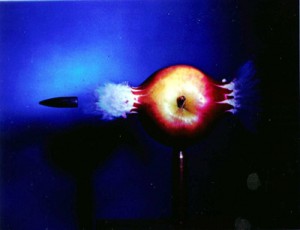Â
What better way to ring in a Happy New Year then with a happy story from the ER.
This is about a good MI outcome and a great reminder of why we go into emergency medicine.
Â
{ 2 comments }
From the monthly archives:
Â
What better way to ring in a Happy New Year then with a happy story from the ER.
This is about a good MI outcome and a great reminder of why we go into emergency medicine.
Â
{ 2 comments }
 Years ago, a young male was brought in to the ER unconscious. Or rather, he was dropped off by some other men in a car at the back door. They quickly left the premises, burning rubber the whole way. The patient was completely unresponsive, but he didn’t have any sign of trauma on him, except for some bleeding from his ear canal. Bleeding from the ear can happen for a variety of reasons, including head injuries. The remainder of his physical exam turned up nothing, and a battery of tests were ordered, including a brain scan.
Years ago, a young male was brought in to the ER unconscious. Or rather, he was dropped off by some other men in a car at the back door. They quickly left the premises, burning rubber the whole way. The patient was completely unresponsive, but he didn’t have any sign of trauma on him, except for some bleeding from his ear canal. Bleeding from the ear can happen for a variety of reasons, including head injuries. The remainder of his physical exam turned up nothing, and a battery of tests were ordered, including a brain scan.{ 5 comments }
 Hilarious interaction with a young male patient last summer.
Hilarious interaction with a young male patient last summer.
Me:Â What seems to be the problem sir?
Patient (grimacing):Â I twisted my knee water skiing!
Me: It looks like a sprain, we’re going to put you in a knee immobilizer, and you need to ice and elevate it. Do you need a note for work?
Patient:Â Oh no, I don’t work, I’m disabled.
Me (noticing he is on Medicare): Disabled? From what?
Patient:Â I hurt my back in a car crash.
Me:Â So you can water ski, but you can’t work?
Patient:Â Something like that.
Me: Wow, that’s that’s a bad deal, how are you holding up?
{ 4 comments }
{ 0 comments }
 A point of contention among vascular surgeons is the lack of understanding among the public, and even medical people, about the difference between aortic dissections and aneurysms. To be fair, I don’t have any first hand knowledge of what happened to John Ritter, although the media reported that he had an aortic dissection. Put plainly, a dissection is when the walls of the artery strip away from each other because blood flows directly into the wall of the vessel, instead of through the middle of it.
A point of contention among vascular surgeons is the lack of understanding among the public, and even medical people, about the difference between aortic dissections and aneurysms. To be fair, I don’t have any first hand knowledge of what happened to John Ritter, although the media reported that he had an aortic dissection. Put plainly, a dissection is when the walls of the artery strip away from each other because blood flows directly into the wall of the vessel, instead of through the middle of it.{ 5 comments }